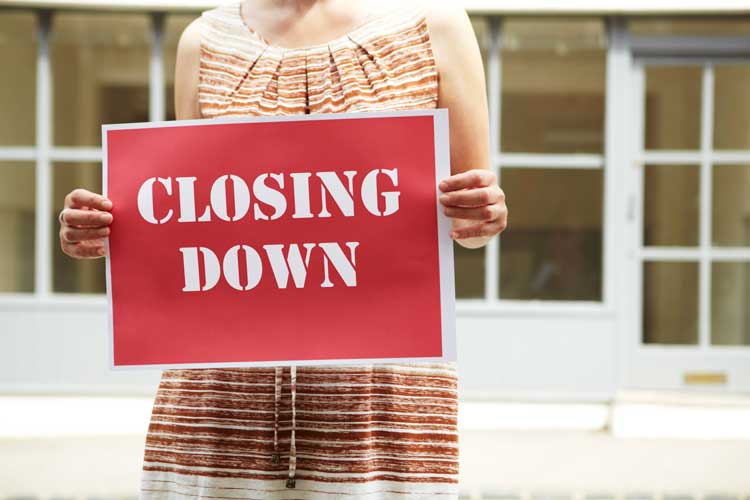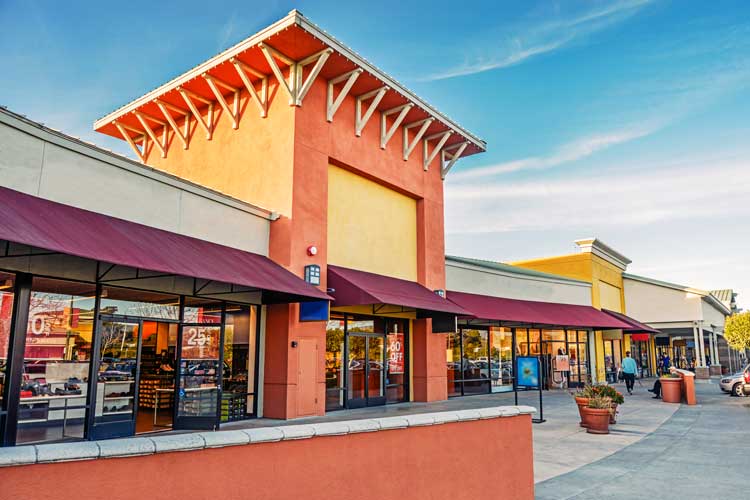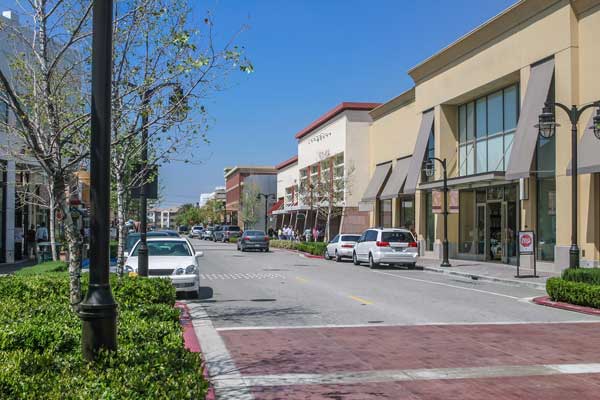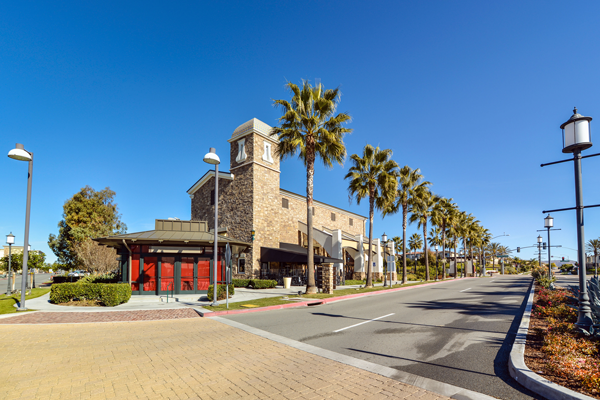Category: Retail Development
Answering Questions About Leadership In Public/Private Partnerships
Posted by Retail Attractions Blog on May 23, 2018 in Blog | No Comments
One of the more popular ways to start a new retail development project is to enter into a public/private partnership. This type of partnership exists between a city government (the public party) and a retailer or developer (the private party). Public/private partnerships are built on the idea of shared control between private parties and city governments as they work together toward a retail development goal.
In order to achieve their goals, public/private partnerships need consistent, coordinated leadership. Whether it’s an individual or a small group, good leadership in a public/private partnership is essential to keeping everything moving forward as planned.

What does a leader do?
In a public/private partnership, the leader is responsible for defining clear goals and keeping the project moving toward those goals. They’ll help bring the right parties to the table, act as the bridge between private project managers and political leaders, and give other stakeholders a forum to share their thoughts on the project. They’re also working to coordinate the development process and keep everyone on-point.
The most effective leadership for public/private partnership isn’t a top-down approach where the leader’s just giving orders. A project like this needs a leader who facilitates and inspires others to keep moving toward shared goals. The leader acts as a point person, getting everyone involved in the project together and then following through with them until the project is completed.
Where do you find public/private leaders?
You’ll need to find someone that both parties agree on as the leader. The last thing you want is for a leadership choice to cause fighting between the two groups. Keeping with the idea of sharing control, it might be a good idea to appoint one representative from each group. Then they can jointly act as project leaders.
You’ll also want to plan for the possibility that leadership could change during the course of the partnership. Many political leaders, for example, are replaced after a 2- or 4-year term. You’ll need a plan for transcending political and administrative changes. That’ll help ensure the new leaders have the same commitment and goals as before so the project can keep moving forward without unnecessary restructuring.
How do you lay the groundwork for effective leadership?
Even the best leader can’t do much good if the groundwork for your public/private partnership is shaky. Take the time early on in the process to prepare for public/private partnerships. Make sure both parties do their homework and establish a solid foundation for good decision making in the partnership.
One of the best things you can do early on in the process of creating a retail development partnership is to bring in a retail expert. Here at Retail Attractions, we have extensive experience helping communities and developers come together in partnerships that benefit both parties. We can help you lay a solid foundation for your retail development goals and we’ll work with leaders to ensure your project reaches completion. Get in touch with us today to get started.
What Do Record-Breaking Retail Closings Mean For Your Community?
Posted by Retail Attractions Blog on May 14, 2018 in Blog | No Comments
As of mid-April, various companies are set to vacate more than 90 million square feet of retail space in 2018. This new number comes in the wake of department store chain Bon-Ton being forced into liquidation. RadioShack, Payless ShoeSource, and Toys “R” Us have also filed for bankruptcy protection. And other companies are scaling back their U.S. presence, including Rite Aid, Subway, and Best Buy.
Suzanne Mulvee, a senior real estate strategist at commercial real estate services firm CoStar, predicts Bon-Ton won’t be the last company announcing new closings this year. This doesn’t mean all physical stores are going away, but it does represent a massive shift in the retail industry.
So what does the “retail apocalypse” mean for you? Whether you’re a retailer trying to figure out how and where to build or a city that’s relying on retail growth, Retail Attractions can help you answer this question.

More Space Available
The retail closings are going to free up large amounts of retail space. Some property owners see this as a good opportunity to fill the spaces with more profitable tenants. But with so much space available, getting new businesses moved in is going to be highly competitive. Communities and property owners will need to know how to market their retail spaces in a competitive market.
Cautious Expansion
After having seen so many retailers go under, other retailers and restaurants are going to be much more cautious when expanding into new areas. And that means it’s going to take a great amount of initiative and a well-planned strategy to recruit them for your community.
Another way that retailers are expanding more cautiously is by opening small-format stores. The smaller stores let customers experience the products in-person but focus on being a hub for in-store pickup, easy returns, and local delivery. Target, one of the few retailers actually expanding in 2018, expects to open 35 of these small-format stores this year.
Two Categories Still Growing
Rickey Hayes, the founder of Retail Attractions, says, “Two categories that will continue to grow [are] restaurants and groceries.” Even though there are online sites getting in on grocery sales and delivery services that bring the ingredients for quick meal-prep to your door, they still can’t beat the physical locations for convenience. People want to inspect their produce before they purchase it and make sure their perishable items don’t spoil in shipping. And if you don’t want to cook there’s no way to beat the convenience of a restaurant.
Search For Better Data
If you’re a retailer looking for smart ways to expand in today’s retail landscape, you’re going to need access to better data for finding emerging markets. The dynamics of retail have changed. And figuring out exactly how that plays-in to your business isn’t easy to do on your own. That’s one area where Retail Attractions can be a huge asset for your business.
Here at Retail Attractions, we’re keeping a close eye on the emerging trends in retail. Whether you’re a community looking to attract retail or a retailer wondering how to move forward, you need someone with a wider view who is able to accurately predict what comes next. Contact us today to learn more about how we can help you get through the retailpocalypse.
What Does It Mean For All Parties In A Public-Private Partnership To Do Their Homework?
Posted by Retail Attractions Blog on April 25, 2018 in Blog | No Comments
If you want to create a successful public/private partnership in a retail deal, it’s important that both sides do their homework. Whether you’re the public partner or the private partner, you’ll need to make sure that you’re preparing for the deal and that your partner is also doing their part to make sure that this deal goes smoothly.
Preparation before you sign a deal can make a world of difference in whether or not both parties consider the partnership successful. Both partners must be ready to invest in the project long-term and make a commitment to staying informed about their project for as long as the partnership continues.

It’s Not All About The Prep-Work
You’re not going to go into a deal without due-diligence to make sure that it’s a good idea. But do you know it’s also important to keep “doing your homework” as the project progresses?
Both partners need to go into the project with a good understanding of what is involved. And they also need to stay informed throughout their partnership. Whether you’re the public or private partner, you have to commit to staying informed about all the financial, social, and technical aspects of the project.
Sharing Your Information
As you’re gathering information about the project, you don’t want to keep it all to yourself. Both sides of the partnership should be doing their homework and sharing that information with each other. Retail development is a complicated process and good communication is essential to keep things moving forward.
Clarity and transparency should mark every stage of the partnership. And if you bring in a consultant like Retail Attractions, you should also share the work that they do. Your consultant can also help you come up with an information-sharing strategy that works for your partnership.
Communicate About Finances
Before you enter a partnership, you’ll need to do your homework regarding a joint financing plan. You’ll also want to find out about any limitations on your partner. For example, if you’re the private partner and you’re depending on public funding you might need to have a backup plan in case of budget cuts, administration changes, or emergencies that are outside your partner’s control.
Public/private partnerships allow for quite a bit of creativity in funding retail development. Both parties should be researching funding solutions and sharing their ideas with their partner. Once again, this is an area where a retail consultant can be a big help. They have experience working out development deals like yours and can offer suggestions for funding.
If you’re ready to get some help doing your homework when preparing for or while in a public/private partnership, get in touch with us. Retail Attractions has extensive experience working with both public and private partners. And we’re ready to help you develop a retail deal partnership that will benefit both parties.
How To Establish An Effective Decision-Making Process In Public/Private Partnerships
Posted by Retail Attractions Blog on March 18, 2018 in Blog | No Comments
When cities take on economic development projects, they often do so in partnership with the private sector. This has the potential to benefit both parties. However, public/private partnerships are complex things and require plenty of planning to minimize risks and maximize the rewards. Even after you’ve found a private investor for your city to work with, there are still a number of things to sort out before formalizing the partnership.
All the key players in public/private partnerships have to agree on the rules and structure for their partnership early on in the process. You’ll want to formalize how decisions will be made, establish effective policies, and come up with a plan for implementing your partnership goals together.

Define The Plan and Goals
You have to agree on the process you’re going to use to make, implement, and reassess decisions. That’s something to talk about early in the process before something comes up and the different partners have different ideas on how to handle decision making.
It’s important to come up with a formal plan of action that’s agreeable to both the public and private partners. This will include a timeline for implementing the project. You’ll also need milestones that each side can use to assess how well their partner is doing at moving toward the shared goals. Agreeing on your goals and the plan for attaining those goals will give you a framework for making decisions regarding the project.
Assign Roles and Responsibilities
As part of the plan for reaching your partnership goals, you’ll need to define the roles and responsibilities of each partner. Both the private partner and public partner have to agree on their individual roles and responsibilities before moving forward with the project.
You should incorporate a summary document outlining performance standards, clear metrics, and a plan for dispute resolution into the contract you sign as part of a public/private partnership. Documenting which party is responsible for what is a key step in making sure that decisions will be made effectively in your partnership.
Include Checks and Balances
There should be a certain amount of flexibility in a public/private partnership. Things aren’t always going to perfectly smoothly during the development project. You’ll need a system in place that lets you reassess decisions if they’re not working out. Both partners should have the opportunity to check on each other’s progress and propose modifications to the process if things aren’t working out as planned.
Laying the groundwork for a successful public/private partnership is a tricky thing. When you’re working out how to establish a decision-making process that’s going to serve both partners, it’s a good idea to get some professional help. Here at Retail Attractions, we specialize in helping both sides in a retail development deal define their goals, understand their responsibilities, and establish a successful partnership. Contact us today to schedule a consultation.
Are You Missing Important Retailers? How To Target Your City’s Retail Expansion
Posted by Retail Attractions Blog on February 7, 2018 in Blog | No Comments
Your community needs retail. It helps bring in visitors, creates jobs, serves your local population, and increases tax revenue. But just knowing you’d like to bring in more retailers isn’t enough. You also need to know which retailers are missing and how to get their attention.
Having a clear plan is key to retail expansion. And to come up with that plan, you’re going to need a whole lot of very specific information. The easiest way to get that is to work with a professional consultant.

Finding Market Gaps
You probably already have some retail in your city. Even small market communities usually have a gas station or grocery store. And larger markets often have a variety of shops and restaurants already in the community. The question is, what else do you need?
To answer this, you’re going to need to find market gaps in your community. A gap in the market means there’s some need that consumers have which isn’t being met. You need to identify those needs and find a retailer or retailers who can fill the gap. Plus, you’ll also need to look at sites available for development and figure out what you can offer potential retailers who might build in your community.
Running The Data
Without up-to-date demographic data and market analysis, as well as an intimate understanding of how retail works, it’s very hard to figure out exactly which retailers would be best suited to your community. It’s unreasonable to assume that every city government should have someone on staff who’s an expert in retail development. It’s much easier, and more financially sound, to hire an expert consultant when you’re navigating a new retail project.
Retail Attractions has massive amounts of up-to-date data and analytics. These tools give us an advantage in figuring out what demand there is for certain types of business within your community. We can drastically shorten the amount of time your city would otherwise put into data gathering and analysis.
Contacting Retailers
Once you’ve identified what sort of retail your city is missing and which retailers would best fill your market gaps, it’s time to reach out to them. Here, you come up against another challenge. You need to convince retailers to listen to you when you ask them to build in your community.
Retailers take on a big risk when they commit to building in a new market. They want to make sure that there’s a very good chance their new development project is going to succeed before they commit to building in your city. Hiring a trusted retail consultant with a solid reputation, like Rickey Hayes, means developers are more likely to take your community seriously as a good location for development.
Are you ready to take the next step towards expanding retail development in your city? Contact us and we’ll work with your community to figure out which retailers you’re missing and start bringing them into your city.
Here’s How Your Small Market Community Can Attract Big Retail
Posted by Retail Attractions Blog on January 24, 2018 in Blog | No Comments
So you’re in charge of encouraging retail development in a small market community. You want the increase in traffic and tax revenues that expanding retail will provide. But you’ve also learned that attracting retail isn’t as simple as just contacting investors and developers. You need to show them that your town is the best choice for their next project.
Smaller cities face some unique challenges in attracting retail development. It’ll often take longer to accomplish your goal than a similar project would take in a medium- to large-size market. And you’ll have to get more creative in achieving your goals. But that’s certainly not a reason to give up. In fact, attracting retail to towns with a population under 50,000 is something we do all the time here at Retail Attractions.

Understand How Retail Works
The first key step in attracting retail to your small market community is educating yourself. The more you understand how retail works and what retailers expect from your community, the better prepared you’ll be. Our blog is a great resource for information like this. Here are a few posts to get you started:
- Be An Opportunity, Not A Risk
- What Are Retailers Looking For?
- 3 Key Roles Your City Plays In Retail Site Selection
Know Your Data
It’s vitally important to know your market data. Make sure your city has up-to-date and correct information regarding your trade area, including stats about the people who live in your community and those located close enough to shop there. That includes information on population growth, disposable income, and potential customer bases. You’ll also need information on your city’s regulatory climate and your willingness to partner with the private sector.
But even more important than data is knowing how to use it. Without a story, data is just numbers. And in a small market community, data can actually harm you if you don’t know how to present it. That’s why it’s so important to get expert help in collecting and presenting your city’s demographics.
Start Small, Then Expand
Patience is definitely a virtue when it comes to retail development. Even when Rickey was working in Owasso, OK and conditions were perfect for retail expansion it still took 10 years to retail the market. You can’t expect your small market community will turn into a booming center of retail overnight. Setting a series of smaller goals over the course of several years is more practical.
For example, let’s say your small market community is located on a highway. Adding a QuikTrip near the exit from the highway to your town will pull in a lot of business. Once you’re pulling in traffic, there’s an increased chance that you can get a couple of fast food chains like a Taco Bell or Chicken Express to open locations nearby. Those will also drive a bunch of sales and the tax from those will lead to an increase in revenue for your city.
Hire An Expert
One of the biggest challenges facing a small market community is getting retailers to actually see you as a money-making location. You need a way to stand-out from the competition. This is where having a retail expert on your side can make the most difference. It’s one thing to submit data to a company. It’s another for the decision makers to hear that your town is a prime location from a contact they know and trust.
Retail Attractions has extensive experience bringing new retail into small market communities. In fact, most of our clients are towns with a population less than 50,000. We’ve enjoyed a high success rate in helping small market communities increase their retail revenue. And when you work with us, Rickey Hayes will put his network of connections to work for you to help bring big business to your small community. Contact us today to get started.
Are You Making These Common (but Critical) Mistakes in Retail Site Selection?
Posted by Retail Attractions Blog on September 7, 2016 in Blog | No Comments
The retail site selection process is more complex than ever. When you’re looking for a new retail development site, the factors that will determine whether or not your company is successful in that location aren’t always readily available to traditional site selection models. Without help from a third-party with contacts in developing communities as well as in the retail world, it’s easy to fall prey to common mistakes in retail site selection.
Relying Heavily on Models
Companies often invest heavily in site selection models designed to explain complex retail environments. Because of the amount of money poured into these models, it’s tempting to have unreasonably high expectations for the results.
Site selection models are a useful starting point, but they’re not well equipped to handle non-standard factors in a given site or to take into account variables that aren’t easily measured. For that, you need someone who’s familiar with the site or has the connections to track down the site-specific information you need.
Oversimplifying Customer Base
Not every person within a certain number of miles of the site you’re looking at represents a potential customer. The actual trade area is defined by more complex factors than concentric rings, and the percentage of people within that area that fits your customer profile is a more important figure than the total population. Retail Attractions’ demographic analysis can supply this nuanced information, along with Opportunity Gap Analysis for a specific location that will let you know if your company can fill retail gaps in that community.
Not Rethinking Expansion
While brick-and-mortar stores aren’t going away, the rise of online shopping is changing the world of retail development. Customers still want the option to go into stores and see the products for themselves, but they don’t always buy in-stores. It’s increasingly common for customers to go home and order online, then have the items shipped to their homes or come back to the store for pickup.
With that shift in how customers approach shopping, many companies are downsizing their individual stores and working on using the store to drive online interactions with customers. This dynamic varies depending on the company and product, but it’s something to keep in mind when considering site selection.
Too Much Emotional Investment
Site selection needs to remain objective. A site can’t be chosen solely because of a desire to beat out the completion, or because the site is in a big-name city, or because so much effort has already been poured into evaluating a less than ideal site. A fresh pair of eyes in the shape of a third-party consultant like Rickey Hayes can help your company make the decision whether or not to build in a specific location based on what actually makes the most sense for the company.
Retail and restaurant site selection is a complex process, but we aim to make it easier with a simple approach: know the product, know the consumer, and find a location that maximizes sales potential. Contact us today to learn more about how Retail Attractions can help your business find the best site for your next expansion.
The Common Sense Guide Negotiating A Fair Retail Deal
Posted by Retail Attractions Blog on August 7, 2016 in Blog | No Comments
When forging a public/private partnership for retail development, fairness must play a role. It would be very difficult to sustain a partnership where one party feels like they got the short end of the stick during the negotiations process. Defining, and agreeing on, what is “fair” for all parties involved can get rather tricky, though.

Do Your Homework
By the time you reach the final negotiating stage, you should already have a good understanding of what you and your potential partner each hope to get out of this retail deal. Spend time talking with them and building trust. Be clear about what you need this deal to accomplish and get clarification about what they expect as well. The better you understand the deal being negotiated, the more likely everyone will be satisfied with the terms in the final transaction documents.
Stay Involved
It’s imperative that the principle parties stay involved during negotiations. You’re the ones driving the shared vision. You’re the ones who will reap the benefits, and consequences, of this deal for the next few years. Ignoring or abdicating responsibility for negotiating a fair agreement can make the deal fall through. Retail deals are much more successful if you’re putting effort into laying a solid foundation for long-term cooperation.
Think Long Term
Don’t loose sight of the big picture by getting bogged down in tiny details. Remember compromise is often a necessity for both sides. Be ready to negotiate sticky aspects of the deal and work through disagreements before the terms are finalized. Ideally, you’re forging a long-term partnership that will benefit both parties. Exercising patience during the final negotiations and documentation process will pay off long-term.
Consult Experts
There’s far too much involved in negotiating a retail deal for the public/private partners to do it alone. Don’t hesitate to bring in experts to consult on the details. Both sides need legal and technical counsel to help negotiate terms and make sure you don’t miss any legal requirements or site-specific details that have bearing on your transaction.
When thinking of experts who can help in the negotiation process, don’t underestimate the value of bringing a retail specialist on board. If you hire Retail Attractions, you get the advantages of insight from an economic development professional without the cost of a salaried employee. We’ll work with the community and/or development firm to smooth the negotiation process and help you reach a fair and mutually advantageous agreement. Contact Rickey Hayes for more info, or click here to check out the services we offer.
What Are Retailers Looking For?
Posted by Retail Attractions Blog on June 20, 2016 in Blog | No Comments
One thing we see quite often is that communities marketing themselves for retail development don’t really know what retailers and restaurants are looking for. You might be prepared to “prove” your community is the best place for investment and have data ready, but that’s not the only thing developers are interested in. Knowing what you really need to focus on lets your community stop wasting time on ineffective marketing, and it makes securing a successful retail deal far more likely.
Reliable Data
Understanding a retail investor’s priorities and needs is a key step in forging a successful retail partnership. The first question they need to answer when looking at your community is, “Will we make a profit in this market?” Retail developers need a positive bottom line, and they won’t consider developing a market where it doesn’t look like they can make money.
You will need accurate data to present to potential retail investors, and it has to be in a format that they’ll recognize as reliable. Retail Attractions can help you with defining the trade area around your community, collecting demographic data, producing a market analysis, and presenting it all in a professional format. A third-party analysis shows retailers you take their time and money seriously, which in turn encourages them to take your community seriously.
Community Support
Even when the data indicates your community could be a profitable market, retailers also need to know they can count on your support to move the project forward efficiently. You might not even think about the regulations process when you first start marketing your community, but you can bet developers will be concerned about it. Developers don’t want to partner with a community where red-tape, delays, and fees are the norm when dealing with city administration. Streamline this process as much as possible before making retail development deals.
You can also show support for retail investors by getting infrastructure updates in place. New retail development means your city will need to expand the water and sewage systems, as well as plan for changes in traffic patterns. Showing you have a plan in place to do this is another way to show retailers that your community will support their development efforts.
Market Knowledge
Hiring a consultant who already has contacts within the retail development industry is a huge asset. Retail is a tight-knit community and having a known, respected professional like Rickey Hayes advocating for development in your community can make the difference in whether or not new retail development happens in your city.
Retail Attractions’ consulting services extend beyond just making initial contacts within retail. We’ll also help you put together the right kind of data on your community and take the external and internal steps necessary to prepare for successful retail growth. If you’d like to learn more, contact us to get your questions answered or to schedule a consultation.
Be An Opportunity, Not A Risk
Posted by Retail Attractions Blog on June 7, 2016 in Blog | No Comments
Investing in retail development can be a risky proposition for a developer. If the deal succeeds, they’ve improved their bottom line and increased their customer base and market appeal. But if the deal falls through, they’ve lost a significant amount of money and time. When you’re marketing your community for retail development, you need to present developing in your location as an opportunity, not a risk. The more you understand a developer’s needs, streamline the building process, and commit being a supportive partner, the more likely retail development will be an all-around success.
Understand Developer’s Risks
Uncertainty is one of the key things that can turn a developer away from working with a community. Even if your community offers a good location that the developer is interested in, a high enough level of risk and uncertainty can still scare them away. Put yourself in the developer’s shoes. Would you invest in a community if you’re not certain it will support your retail development efforts or if the permits process sounds excessively confusing? Probably not – you’d look for a different location where you think the development deal would proceed more smoothly.
Minimize Uncertainty
Reducing the level of uncertainty a developer sees coming into your community can be a daunting prospect, especially if your community doesn’t have a history of negotiating retail development deals. Retail Attractions can help you understand what developers are looking for and provide guidance on making your community more attractive. You can start by streamlining the permit approval and document review processes before you even start talking with developers. The more simple and easy to understand your approval process, the more attractive working with your community will be. You can also assemble suitable sites for retail development and get infrastructure in place for your future partners.
Balance Community Interests
Another thing retail developers are looking for is support. They want to know the community leaders will be on their side if disputes arise regarding the new development project. Opposition to new development is fairly common, and you need to be ready to speak up and support your partner. That said, minimizing the risks and uncertainty for potential business partners shouldn’t mean sacrificing your community’s interests. You want to support your development partners and be honest with them, while still making sure the project benefits your community. One key to this is open and honest communication. Be up-front about what you will and will not do in this partnership, honor your commitments, and don’t surprise your partner with hidden costs and fees. Want help navigating the tricky world of retail development partnerships? Contact Retail Attractions today to learn more about how we will tailor our consulting process to your community’s individual needs and help you attract just the right developer for your project.

